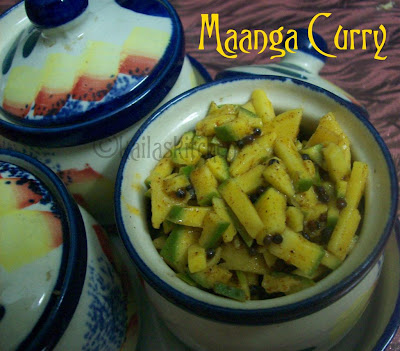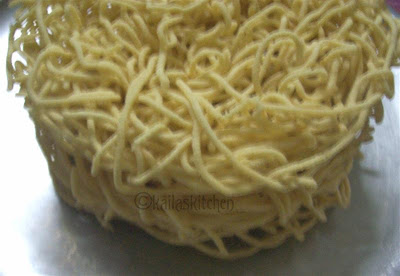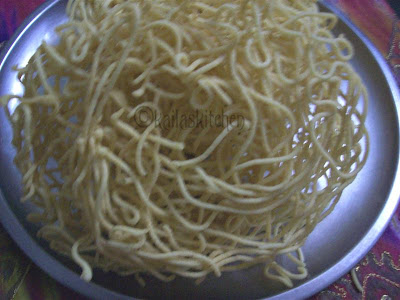.jpg)
Its dhokla time today. Khaman dhokla is the recipe selected for the first challenge. Srivalli gave the detailed recipe from a Gujarathi friend of hers, which is indeed a fool-proof recipe. I have made instant versions of dhokla both in my MW and stove top. But it was no way near the perfect, soft,spongy, moist dhoklas I had eaten before. My husband occassionaly used to buy dhoklas from a Gujarathi sweet shop near his office. When Valli mentioned that its a traditional recipe, I was happy to try it out to get the perfect dhoklas. I prepared it carefully following the instructions given in the recipe. When I served them with the mint chutney, my husband said gave a thumps up, which doesn't come, that easily.
I used buttermilk instead of curd and water. Also had to add 2 more tablespoons of the batter to get the right consistency. Rest everything I followed the same.
Recipe makes 20 medium sized pieces
For Batter:
Bengal Gram flour / Besan - 1 & 1/2 cup
Curd - 1/2 cup (not very sour)
Water - 1/2 cup
(I used 1 cup of buttermilk + 2 tblspns of water)
Cooking Soda - 1/2 tsp
Salt to taste
For seasoning to be mixed to the batter (to be added just before cooking)
Oil - 1 tbsp
Turmeric a pinch
G. Chili paste - 3 nos
Sugar - 1 tsp
Citric acid - quarter tsp ( A big pinch)
Eno - 1 packet (green colour fruit lime) + sprinkle or dust few bits on the plate
For tempering
Sesame seeds , Mustard Seeds,Curry leaves,Grated coconut,Coriander leaves
Little water ( 2 tblspn) + Oil to be topped on dhoklas
Method to prepare:
Mix first 1/2 cup curds with 1/2 water. To this add the besan and mix well to get a lump less batter, the consistency should be of idli batter, more of dropping not pouring consistency. Slowly add more water if needed else, add the soda. Keep it aside to rise for 1 hour.
If you are using a pressure cooker, fill the pan with water, place a plate over which you will have use a plate for steaming the dhoklas. Thali plate can be used for steaming.
To the batter mix in the citric acid, oil, salt, sugar, green chili paste and turmeric powder. Mix well. This has to be done just before pouring to the plate.
Meanwhile have the pan on stove, and let the water start boiling. When the water reaches the rolling stage, you can mix the eno to the batter (Save little of eno for dusting on the plate), mix gently, you will see bubbles coming out.
Dust or sprinkle the plate with eno. Then immediately pour the batter to the plate. Place the plate carefully inside the pressure pan and cover with lid. You need not use the whistle. After covering you will find steam coming out of the outlet, simmer and don't disturb for almost 5 -7 minutes.
After 5 -7 minutes, remove the lid and proof it using toothpick or knife. If the knife comes out clean and does not have any batter sticking, then its done. Cover back and let it remain on flame for 1 min and switch off the gas and allow it for 5 minutes.
In a bowl, mix 2 tblspn of water along with a tsp of oilRemove the plate from the pan, pour the water and oil mix over the top.
For seasoning, heat a pan with oil, add curry leaves, sesame seeds, mustard seeds and finely chopped green chilies. When mustard starts popping, remove and pour over the dhokla.
.jpg)
Points to note
The batter should be filled to only 1/2 as it will rise up. After adding eno the batter should not rest.
Amount of sugar can be increased on preference.
If you want perfect shaped ones and not the crumbling, cut and handle gently
Dhokla can also be steamed in kadai filled with water and a plated titled over it.
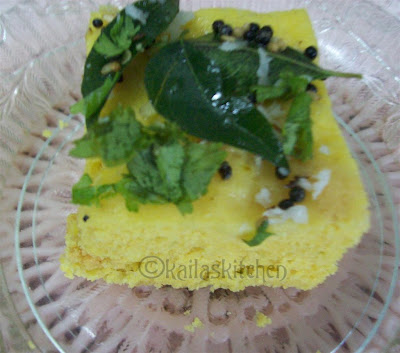.jpg)
Green chutney
G. chili - 4 nos
Grateed coconut - 1/4 cup
Coriander - bunch
Few mint leaves
Cumin seeds - 1/2 tsp
Lime -1 big
Salt to taste
Take all the ingredients except coriander in a food processor. Grind to a smooth paste.
Then add the coriander and again grind. Remove to a bowl, add the remaining lime and serve with Dhoklas.
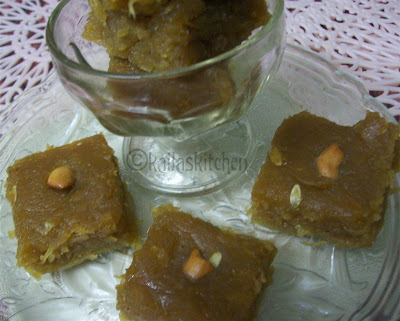.jpg)
.jpg)


.jpg)
.jpg)
.jpg)
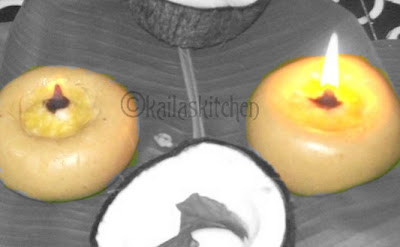





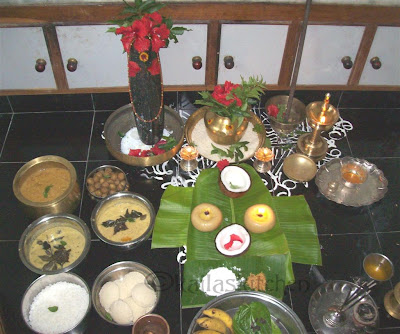
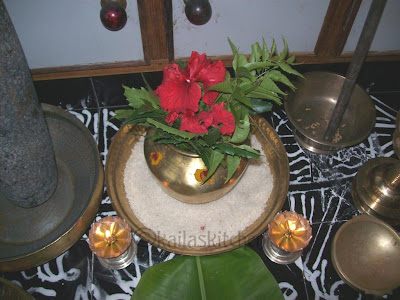.jpg)
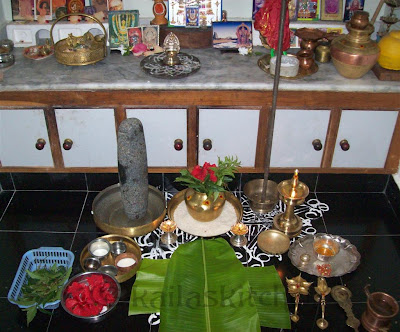.jpg)
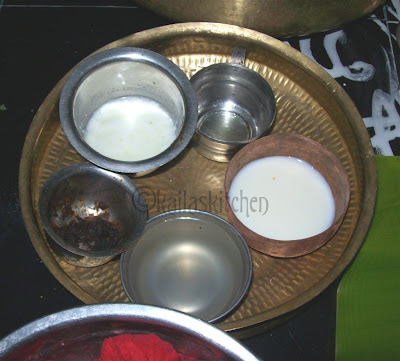.jpg)
.jpg)
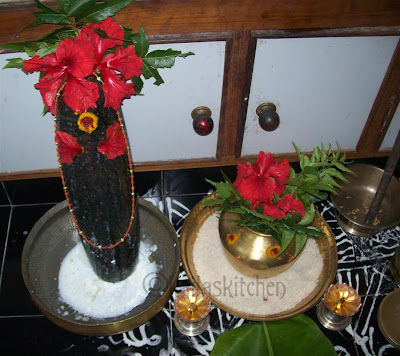
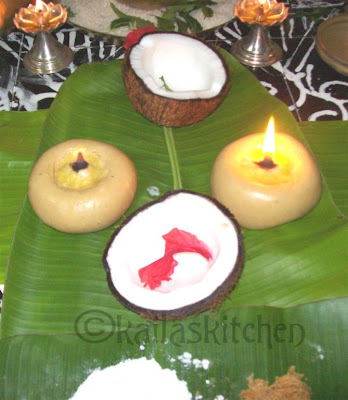.jpg)
.jpg)
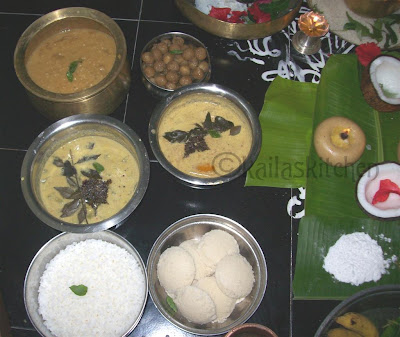.jpg)




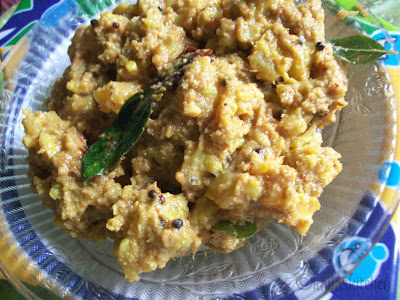.jpg)





